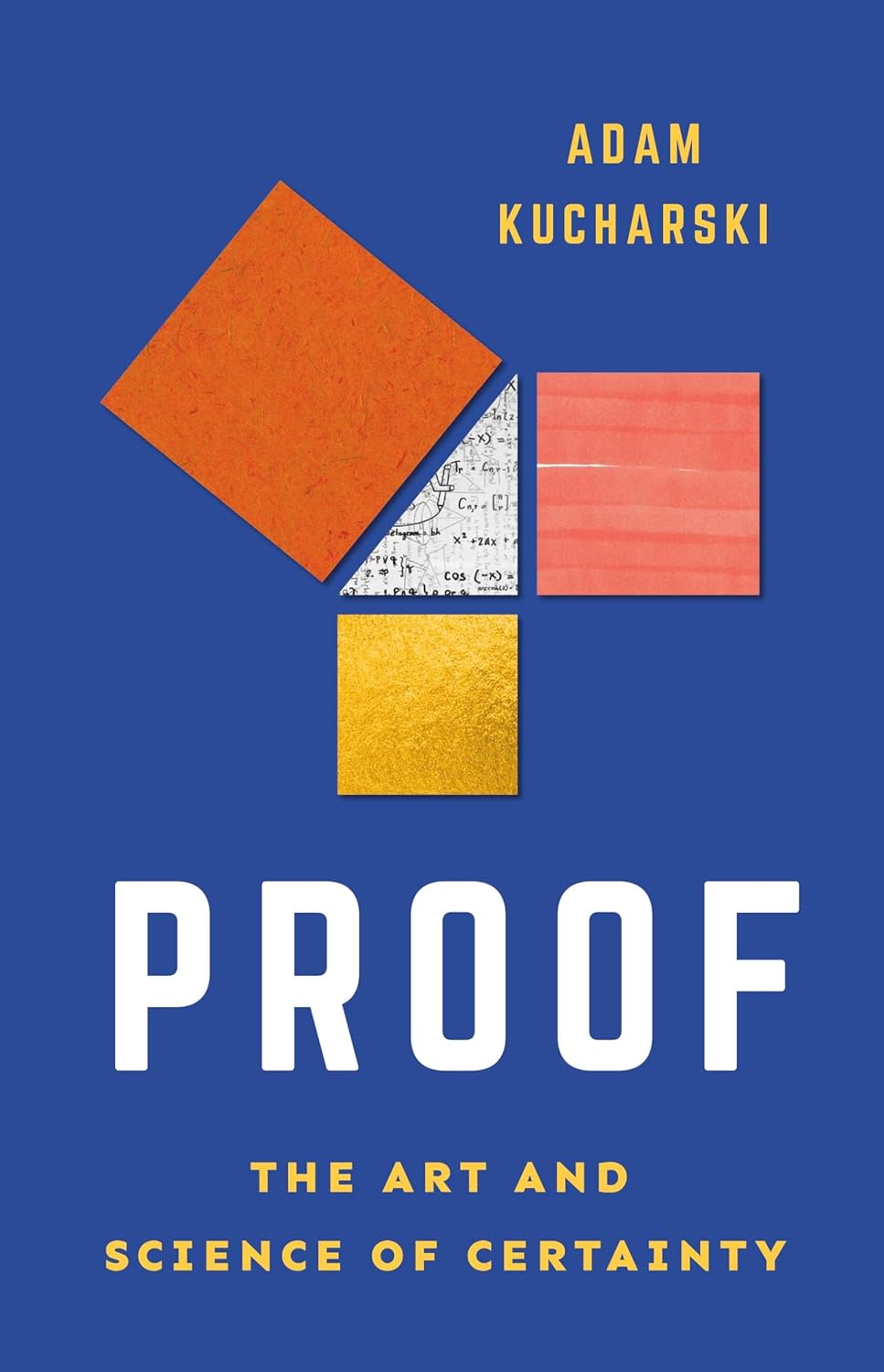
- Author: Adam Kucharski
- Publisher: Basic Books
- Publication Date: 05/06/2025
- Number of Pages: 368
- Format: Hardcover
- Price: $32.00
- ISBN: 9781541606692
- Category: gen
[Reviewed by Bill Satzer, on 05/15/2025]
The author is a mathematician and a professor of infectious disease epidemiology in the UK. This book is about proof, in a large sense, something that includes mathematics but emphasizes the search for evidence. It takes a broad look at fields where evidence (and the quest for certainty) matters a lot. That means legal decisions in the courtroom, all manner of judgements based on statistics, and a good deal about public health questions in epidemiology. It also touches on questions on how evidence is used in the context of artificial intelligence. The introduction describes the book as about the methods people have developed to gather evidence, accommodate uncertainty, and get to something that can serve as a basis for decisions in complex situations. The author also notes that a crucial piece of his treatment is what happens when those methods fail.
The book is less about proof in the mathematical sense as it is about what constitutes “good evidence” that enables good conclusions. While the author never explicitly defines proof, he generally means accumulation of evidence and development of arguments to convince ourselves- at least provisionally - that something is correct. The next step is to convince other people. That is not just about data or research, but - depending on the subject – often involves psychology, politics and prior beliefs.
The meat of the book – and maybe what motivated it in the first place – is an epidemiologist’s perspective of the pandemic and what recommendations the UK should provide to the public. The author was in the middle of that, and contemporary approaches to scientific evidence were central to their considerations. As variants of the COVID virus appeared, decisions became more and more difficult. There were far too many unknowns – lack of data, questions about how social contacts and transmission were linked, the influence of travel patterns, and the long-term genetic evolution of the virus. Many unknowns, a great deal of uncertainty, and still an urgent need to give guidance to the British government.
The ”Big Lie” in its many forms is also treated at some length. Conspiracy theories, arguments that offer nothing but extensive repetition of the same untruth, and persisting basic logical errors – all these contribute to providing false or dismissing good evidence.
The author offers a number of enlightening anecdotes throughout the book. One involves Abraham Lincoln, (who apparently studied Euclid’s Elements very intensely), when he argued using proof by contradiction that slavery was logically wrong – if A could enslave B, then B could enslave A. Another curious story tells how the esteemed mathematician Paul Erdös refused – over and over again - to believe the correct (but unintuitive) resolution to the famous “Monty Hall problem”.
The book offers a consideration of many aspects of what kinds of evidence might lead to convincing arguments, but certainty remains an extremely challenging and probably unachievable goal. The author provides a discursive and wide-ranging perspective, but – of course - offers no paths to certainty.
Bill Satzer (bsatzer@gmail.com), now retired from 3M Company, spent most of his career as a mathematician working in industry on a variety of applications. He did his PhD work in dynamical systems and celestial mechanics.
